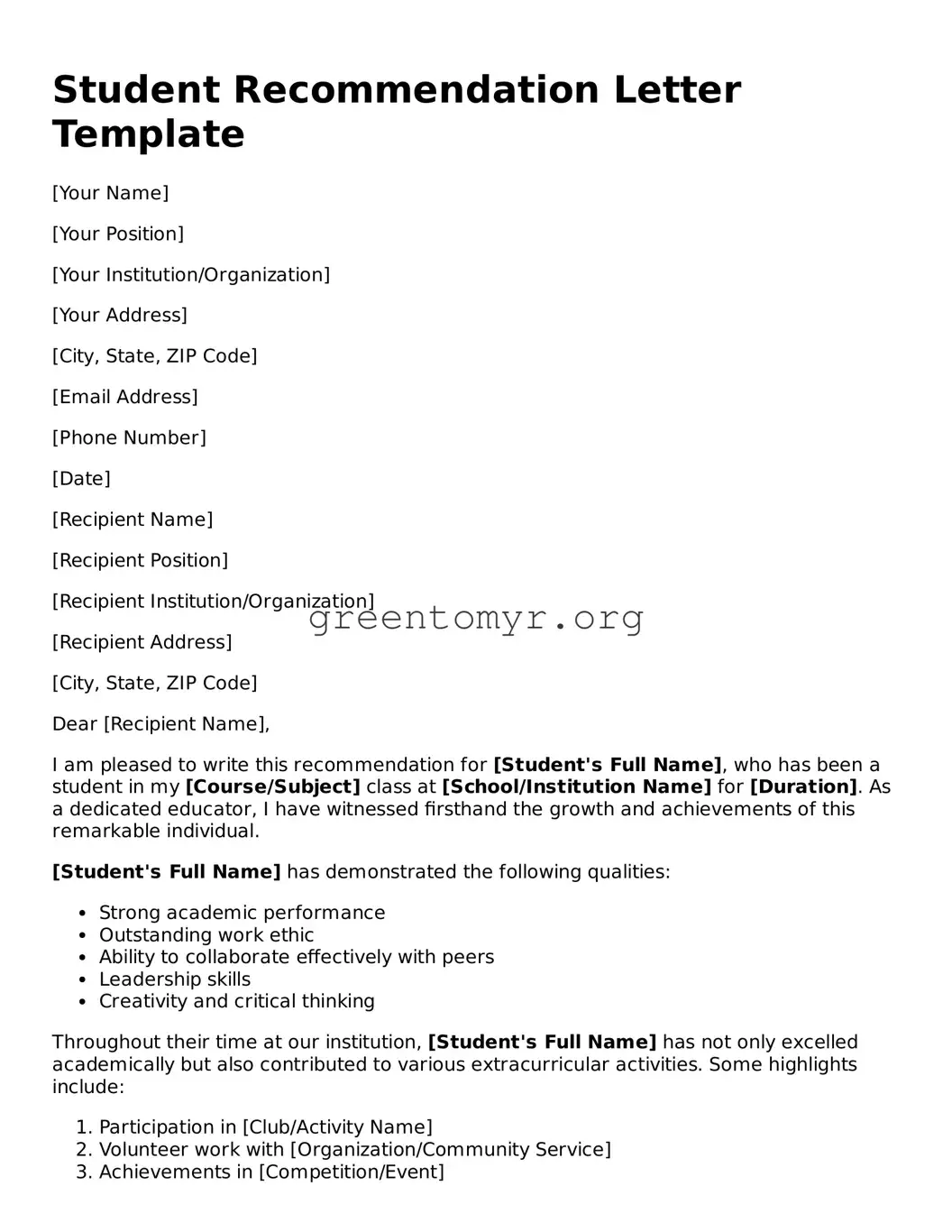Student Recommendation Letter Template
[Your Name]
[Your Position]
[Your Institution/Organization]
[Your Address]
[City, State, ZIP Code]
[Email Address]
[Phone Number]
[Date]
[Recipient Name]
[Recipient Position]
[Recipient Institution/Organization]
[Recipient Address]
[City, State, ZIP Code]
Dear [Recipient Name],
I am pleased to write this recommendation for [Student's Full Name], who has been a student in my [Course/Subject] class at [School/Institution Name] for [Duration]. As a dedicated educator, I have witnessed firsthand the growth and achievements of this remarkable individual.
[Student's Full Name] has demonstrated the following qualities:
- Strong academic performance
- Outstanding work ethic
- Ability to collaborate effectively with peers
- Leadership skills
- Creativity and critical thinking
Throughout their time at our institution, [Student's Full Name] has not only excelled academically but also contributed to various extracurricular activities. Some highlights include:
- Participation in [Club/Activity Name]
- Volunteer work with [Organization/Community Service]
- Achievements in [Competition/Event]
This recommendation aligns with the guidelines provided under [State] law, specifically regarding the endorsement of students for higher education opportunities.
In conclusion, I wholeheartedly recommend [Student's Full Name] for [Program/Opportunity] at [Institution/Organization]. A more dedicated and talented individual is rare to find. Please feel free to contact me at [Your Phone Number] or [Your Email Address] should you require any further information.
Thank you for considering this exceptional student.
Sincerely,
[Your Name]
[Your Position]
[Your Institution/Organization]
